Sharing GSMA's Report on Digital Tech in Natural Resource Management
25 June 2020 8:59am
Era of the Condor: A Species' Future in Recovery (Part 2)
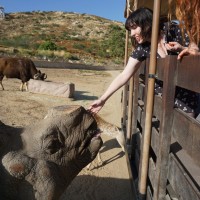 Ellie Warren
Ellie Warren
25 June 2020 12:00am
How do I scale up acoustic surveys with Audiomoths?
 Tessa Rhinehart
Tessa Rhinehart
25 June 2020 12:00am
Seeking research projects related to monitoring wildlife behavior
20 June 2020 3:34pm
23 June 2020 1:56am
I'd love to chat more! I'll be reaching out soon!
Ecology Live: Satellite Imagery, Land Cover Mapping, and More
 British Ecological Society
British Ecological Society
23 June 2020 12:00am
Tech4Wildlife News: SMART Mobile
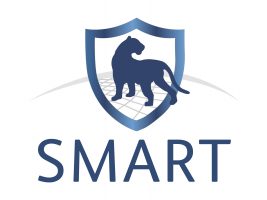 The SMART Partnership
The SMART Partnership
23 June 2020 12:00am
How do I perform automated recordings of bird assemblages?
 Carlos Abrahams
Carlos Abrahams
19 June 2020 12:00am
Did you know that Wildtrack's Footprint Identification Technique (FIT) can be used to promote human-wildlife coexistence!
3 June 2020 6:47pm
18 June 2020 4:38am
Hi Santhosh, welcome to the FIT community, we're glad you joined!
Karin has explained very nicely the difference between the footprint identification technique (FIT) that we use and the old 'pugmark' technique. I'd say that every technique, FIT included, has strengths and weaknesses. FIT, for example, will not work in an area where footprints can't be found. The pugmark technique was very reliant on expert assessment and was prone to inaccuracies for that reason, but on the plus side it could be rolled out over a huge area and engaged the traditional ecological knowledge that is part of India's cultural heritage. The camera traps that replaced it have had their fair share of problems (difficulties arranging the traps for optimal sampling, cameras being stolen, cameras are expensive etc). Our belief is that using several different non-invasive techniques for any one survey yields the most reliable results. I hope this helps.
18 June 2020 9:17pm
Thank you Karin for these details, I didnt read the latest papers, before writing my comment. Interesting to know about morphometrics usage (along with image processing).
18 June 2020 9:21pm
Thank you for these details.
I was about to ask the issues with different substrates. Now I understand the limitations and possibilities.
Yeah, I agree that each of these techniques have their own limitations. Thank you, these inputs definitely help.
We want to provide tracking and surveillance tech FOC to catch poachers.
14 October 2019 3:22pm
14 October 2019 11:57pm
I RUN THE GLOBAL WILDLIFE WARRIORS NETWORK COMPRISED OF 30 ONLINE LOCATIONS IN 30 COUNTRIES WITH A LARGE TEAM OF ADMINISTRATORS. WE ALSO HAVE ADMINS THAT ARE ANTI-POACHING RANGERS IN DIFFERENT PARTS OF AFRICA. LAST YEAR GWW REACHED OVER 5,000,000 PEOPLE. THAT IS ALWAYS GWW'S MAIN GOAL, OUTREACH! AS WE BELIEVE THAT THIS WAR TO PROTECT WILDLIFE WILL BE WON ONCE THE CREED OF CONSERVATION REACHES CRITICAL MASS GLOBALLY
21 April 2020 11:11am
Hello MH, can we get into contact what edge devices (camera traps, CCTV or other sensing) you might have? we are working on the frontline of technology as a force mutliplier for ant-poaching units mostly in southern africa: https://www.youtube.com/watch?v=rOWW0LwKc0g
thank you and regards
Wolf
17 June 2020 3:55pm
Hi Richard, I've been working with Kerinci Seblat National Park in Sumatra for the better part of 20 years focusing primarily to countering tiger and other wildlife poaching and IWT in/around one of the largest national parks in Asia, might be good to talk, at very least you would have a better idea of some of the issues our ranger teams face.
Seeking feedback: draft principles for responsible use of conservation surveillance technology
9 June 2020 6:29pm
Seeking feedback: draft principles for responsible use of conservation surveillance technology
9 June 2020 6:28pm
Seeking feedback: draft principles for responsible use of conservation surveillance technology
9 June 2020 6:22pm
How do I train my first machine learning model?
 Daniel Situnayake
Daniel Situnayake
9 June 2020 12:00am
From Autonomous Cars to Aqualink: Developing a Reef Monitoring System
 Drew Gray
Drew Gray
9 June 2020 12:00am
How do I get started using Machine Learning for my camera traps?
 Sara Beery
Sara Beery
9 June 2020 12:00am
Event: Arm’s AI Virtual Tech Sessions
 Arm
Arm
9 June 2020 12:00am
Guidelines for reducing disturbance to wildlife when using drones
6 March 2020 3:00pm
8 June 2020 6:11pm
this paper is a good place to start: Hodgson, J. C., & Koh, L. P. (2016). Best practice for minimising unmanned aerial vehicle disturbance to wildlife in biological field research. Current Biology, 26(10), R404-R405.
Repairing Camera Traps
28 November 2019 11:20am
14 December 2019 8:50pm
Hi Rob, Dave and all,
So glad to see and join an active conversation on this. I am not directly using camera traps in my work but the lifetime of conservation technologies is something I have been thinking about and I am keen to get involved in finding solutions.
Could a Google spreadsheet like this one help identify those who are interested and the extent of the problem/most common issues ? If there is interest in participating, events on the Restart Project model Alasdair mentioned would be great places to get a sense of the most common faults and potentially create tutorials for those Level 1 repairs.
14 December 2019 8:59pm
Hi Laure,
Firstly, a great article and a big part of the inspiration behind the idea to reuse, repair and 'upcycle' devices like camera traps. Thanks so much for the links also. The Google Sheet is a great idea and thanks for building it! I recently posted a Twitter poll to find out the most common cameras being used so we can make sure to cover their assessment. And the Restart Project looks amazing! I love it. I've fallen a bit behind with a couple of other things, but looking forward to getting back to the broken camera hacks soon.
Cheers,
Rob
8 June 2020 5:47pm
Hi everyone,
I am resurrecting this thread as WILDLABS is currently planning an online tutorial on camera trap repairs in the field on 23rd July at 11 AM ET on which I'll be co-presenting. Do join then if the topic is still of interest! Also, if you've got repair tips you'd be willing to share on this webinar, possibly as a short step by step video, please get in touch.
Diagnosing the cause of malfunctions is a recurring theme on this thread but are there other issues you would like to learn more about or malfunctions you encounter regularly? I created this spreadsheet a while back to get an idea of what the most common camera models and failures were. if you are interested and have a couple minutes, could you contribute to it? It would really help make the tutorial webinar as focused and relevant as possible and maybe create more tutorials and ressources at a later stage.
Announcing the 2020 CLP Team Award Winners
 Conservation Leadership Programme
Conservation Leadership Programme
8 June 2020 12:00am
Innovator Interview: Hack the Poacher
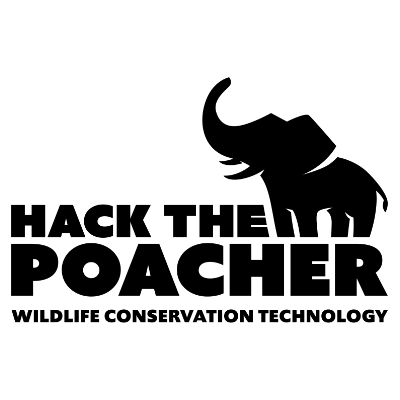 Hack the Poacher
Hack the Poacher
4 June 2020 12:00am
World Bank Conservation Tech Survey
3 June 2020 2:46pm
The Perfect Paw Print: Collecting Data with FIT
 Ellie Warren
Ellie Warren
3 June 2020 12:00am
Webinar: The Next Generation Of Animal Telemetry
 BOEM
BOEM
1 June 2020 12:00am
Webinar: Virtual Ecosystem Scenario Viewer
 OCTO
OCTO
28 May 2020 12:00am
Competition: 2020 Hackaday Prize
 Conservation X Labs
Conservation X Labs
26 May 2020 12:00am
Intro to new FIT community group - early career interest
25 May 2020 6:00pm
How are you using your Audiomoth?
14 September 2018 10:31am
25 September 2018 8:08pm
I'm in North Somerset UK and have two AudioMoths. I've adapted some waterproof cases which also can be locked and strapped onto a tree etc using a python cable. This allow me to use them safely in semi-public spaces. My interst is surveying for bats and recording them with the land owners. I got interested in having a recorder, when helping to trap for nathusius' pipistrelle on a site I've know for 10 years - and just because I was out later than I normally survey we found not only nathusius' pipistrelle but a passing Lesser Horseshoe on my Petterson M500usb - so I decided to get some AudioMoths and play!
My Website is here
26 November 2018 10:40am
As well as the points highlighted by Steph, Open Acoustic Devices are also running an online survey to capture the use of AudioMoth. To evaluate the global impact of open-source conservation technology, it is important to know how the technology is being used. This survey will go towards a human-computer interaction study into the usability of tech in conservation, and also used to evaluate the global impact of open-source conservation technology. AudioMoth is being used as a case study to identify best practises for open-source conservation technology development and accessibility.
It would be great to keep sharing your experiences on this thread and if you have time here with our online survey.
22 May 2020 7:32am
How do we get notified for the next group buy?
standards
21 May 2020 9:39pm
Free underwater camera units
10 January 2020 10:06pm
19 May 2020 11:23am
Is this offer still open
Explorer Classroom: Gautam Shah
 National Geographic
National Geographic
19 May 2020 12:00am







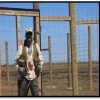

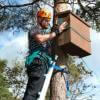

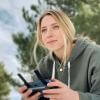

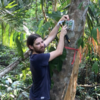

22 June 2020 8:54pm
Hi Ben!
I think we've had correspondence on Twitter in the past, but can't remember for sure... Anyways, I'm a primatology PhD student and do fieldwork in Madagascar studying lemurs (specifically Ranomafana National Park). My dissertation is on lemur vocal communication, but I am doing an applied chapter focused on passive acoustic monitoring as well. I've tested out a bunch of different PAM devices (ARU's-autonomous recording units) e.g., SongMeter, Swift, AudioMoth and am currently annotating call files and prepping a training dataset that I hope to begin using with an ML model to identify species-specific calls. Vocals are a great use-case with behavior and tech as you can sometimes ID contexts, individuals, etc based on acoustic structure or usage which would be really cool (albeit very complicated) to incorporate.
Also have some experience with camera-traps, and the area I work in in Mada is part of the TEAM network so I'm hoping to incorporate camera-traps and ARUs in the same area. I work with local researchers and students (via the Malagasy-run Centre ValBio research station) and am looking to develop community-led initiatives as well so I've got the low-cost, open-source interest as well.
I'll stop typing an essay now, but definitely would love to chat!! Feel free to message me on Twitter or email me ([email protected]).